I am a computer engineering student who loves technology and who wants to think and create different logical and technical solutions for the problems in society using the power of technology. Bringing data-driven solutions and performing R&D for improvising existing techniques is what I look forward to work on.
CGPA : 9.75 / 10
Coursework : Data Structures and
Algorithms, Database Management Systems, Machine Learning & Artifical Intelligence,
Operating Systems, Computer Networking, Software Engineering.
Percentage : 84.00 %
Coursework : Mathematics, Physics,
Chemistry
Percentage : 91.60 %
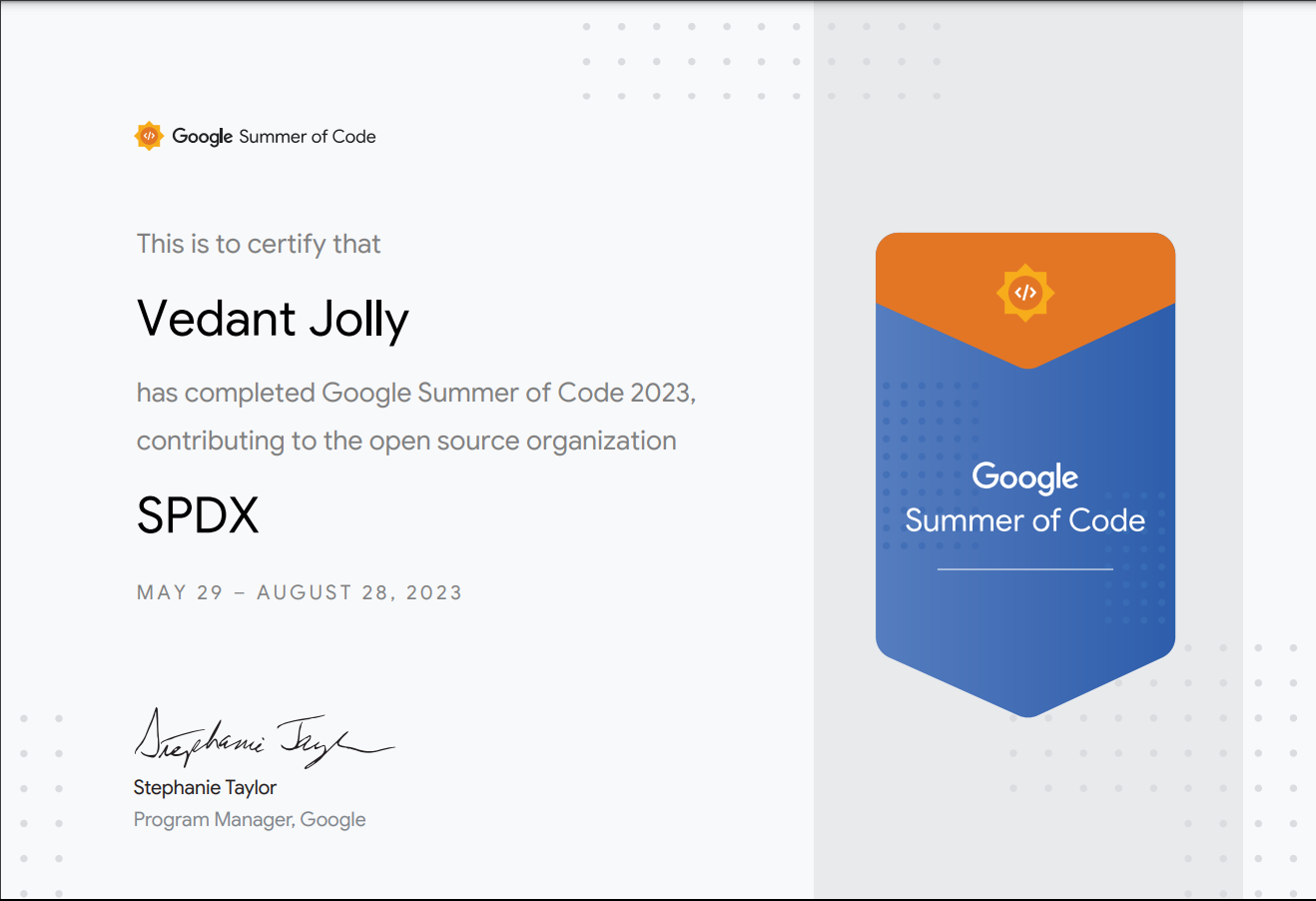
Google Summer of Code
Successfully completed Google Summer of Code (GSoC), collaborating with SPDX to develop innovative solutions, gaining hands-on experience in SPDX License Submission. Delivered impactful contributions, leveraging cutting-edge technologies and mentorship, culminating in a successful project completion.
-1.png)
National Entreprenurship Challenge
Created with the idea of developing entrepreneurship from the grassroots, the aim of the competition is to plan and promote entrepreneurship among the nation's younger generation and to ensure that youngsters don't feel that starting up a company is rocket science. National Entrepreneurship Challenge plans to develop entrepreneurship developing bodies in each student campus in India. It is the first of its kind pan India challenge

Competitiveness Mindset Institute
FLY against COVID is an idea pitching competition with a vision to provide a platform for the young developers to portray their ideas for solving real world problems and inspire others.The aim of FLY against COVID was to come up with an idea which helps to reduce the impact of COVID-19 on different sectors viz. health, education, employment and environment.
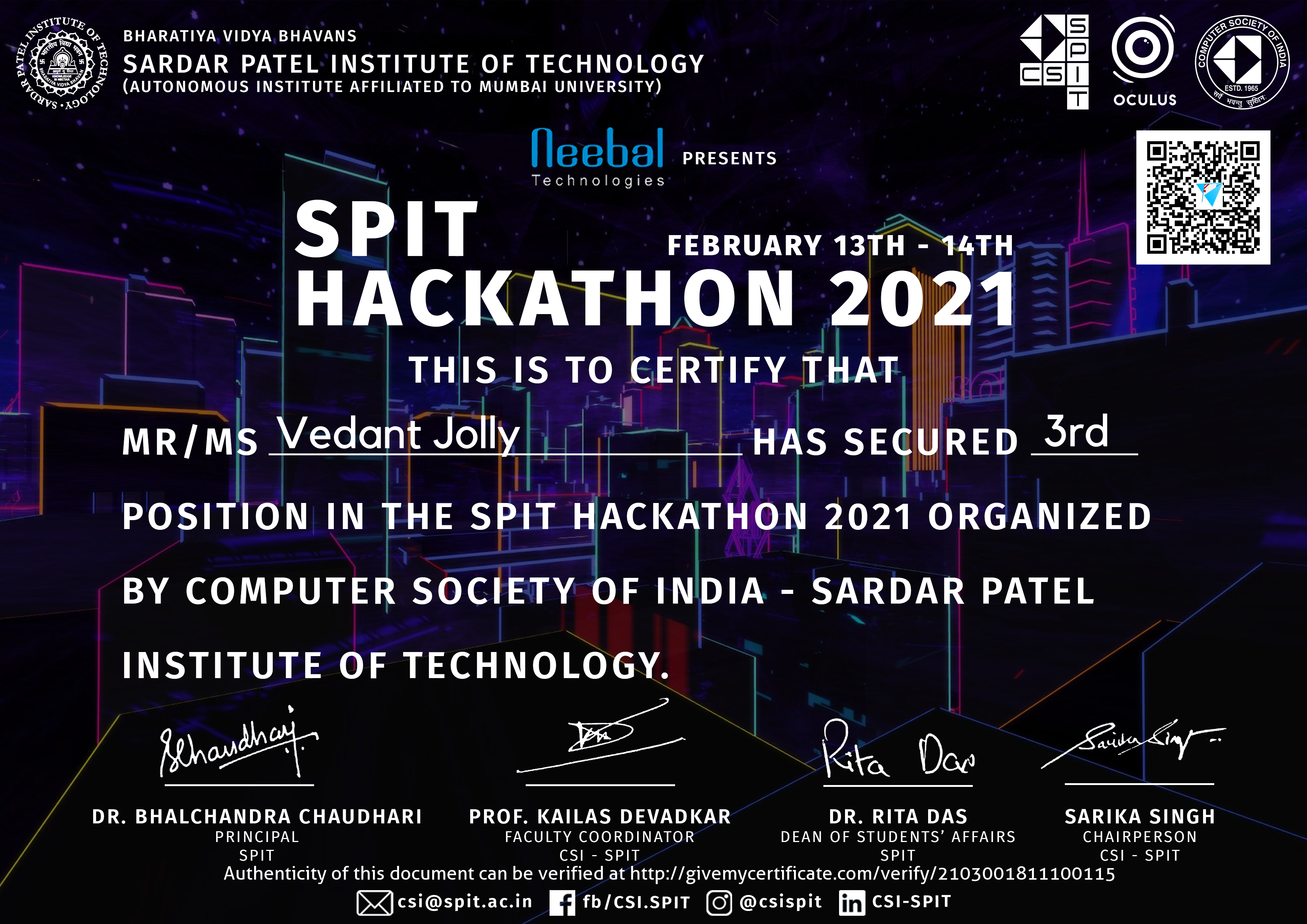
Sardar Patel Institute of Technology, Mumbai
S.P.I.T Hackathon is a 24 hrs hackathon to find out
solutions that tackle real world problems caused due to corona pandemic. We were in the
top 10 teams amongst 250+ participants. Developed FixYourSelf, a complete automated
web-app which is used to detect as well as correct the posture of a user sitting in
front of their work station.
Developed a web-app which is used to detect and correct the posture of the user.

Sardar Patel Institute of Technology, Mumbai
CSI Code Housie is an annual coding competing organized by CSI S.P.I.T. I came second among 125+ participants.
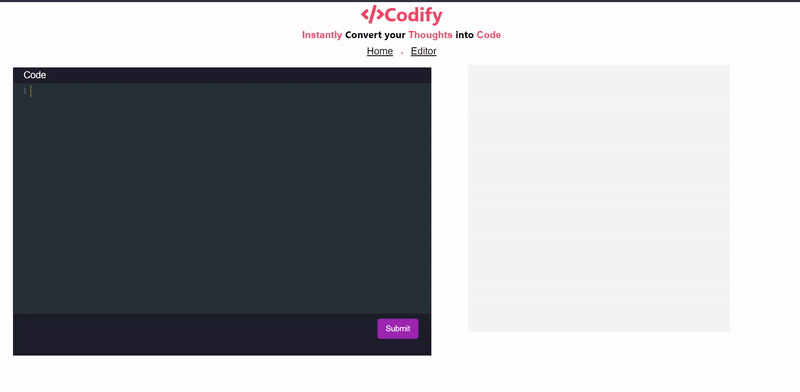
Simplify stands for a smart intelligent system that can code like a human being for a data science application. It enables data scientists to perform all the tedious and time-consuming tasks such as EDA (exploratory data analysis), data cleaning, data pre-processing, data visualization, modeling, and evaluation in the data-science life cycle, by only conveying the logic of the task in natural language (English query) and the system will automatically give out all the relevant python code snippets, or in other words the user just needs to type what they want in the form of a natural language query (English), and our system will automatically give out all the relevant code snippets in python for it.
Technology Stack: React, Flask, Tensorflow, NLP

Sushruta is a ML based responsive chatbot that is used to detect the disease for a user based on the symptoms provided. The user can chat with the chatbot to get information about disease, diagnose a disease and check symptoms. The user can also request to search for nearby hospitals. Made an Android app which is connect to a Flask based RESTFUL webserver. Used TensorFlow for formulating our ML algorithm which is then combined with our dataset of diseases, which we are scraping from National Health Registry
Technology Stack: Java, Flask, Tensorflow, XML
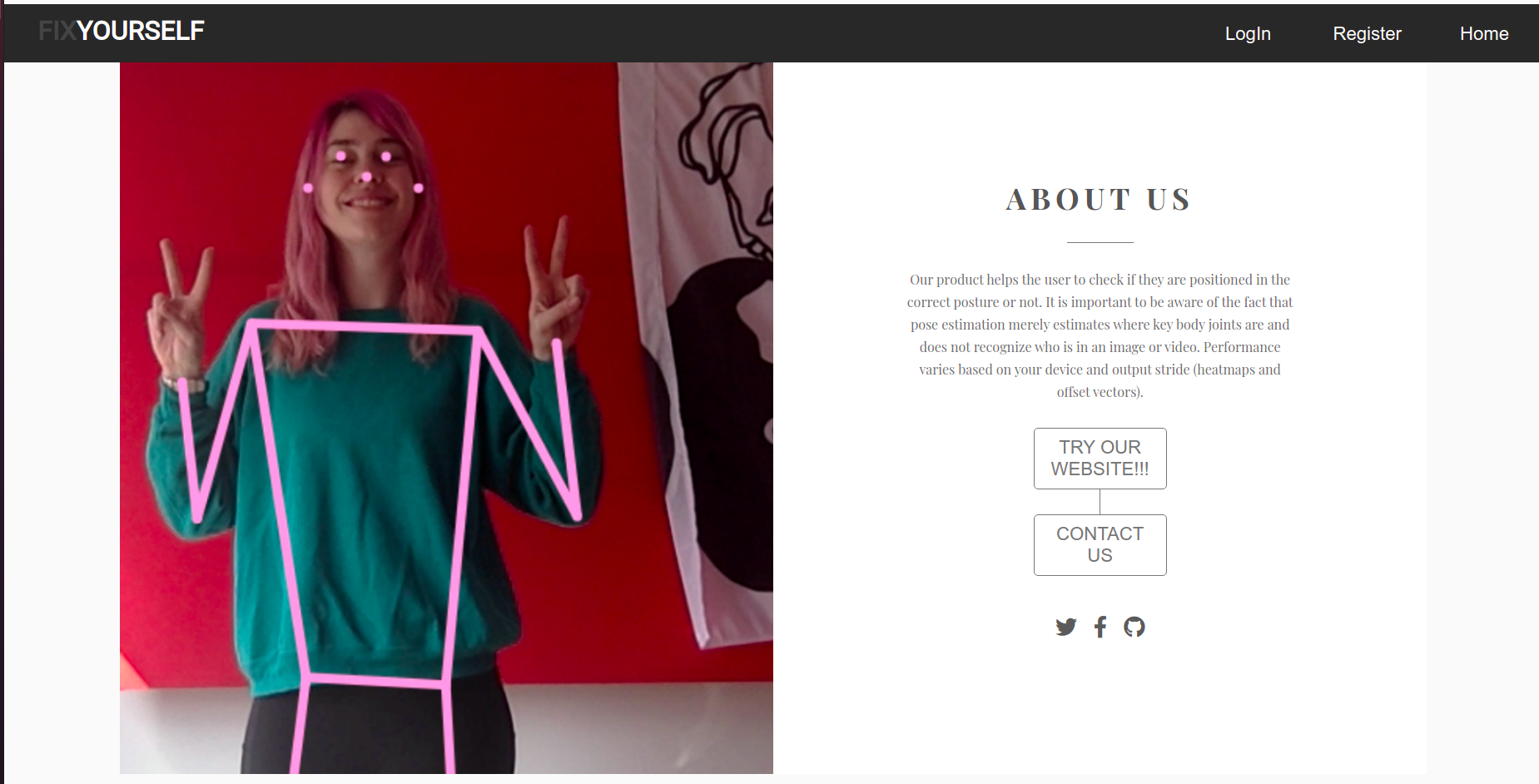
FixYourSelf is a ML based responsive website that is used to implement posture correction for a user sitting in front of their work station. Used Flask as our backend for linking the web pages and SQLite as our database for storing the information for user’s activity. Used TensorFlow.js for formulating our ML algorithm coupled with JeelizAR for detecting and correcting the posture of user.
Technology Stack: JavaScript, Flask, Tensorflow.js, SQLite, HTML, CSS
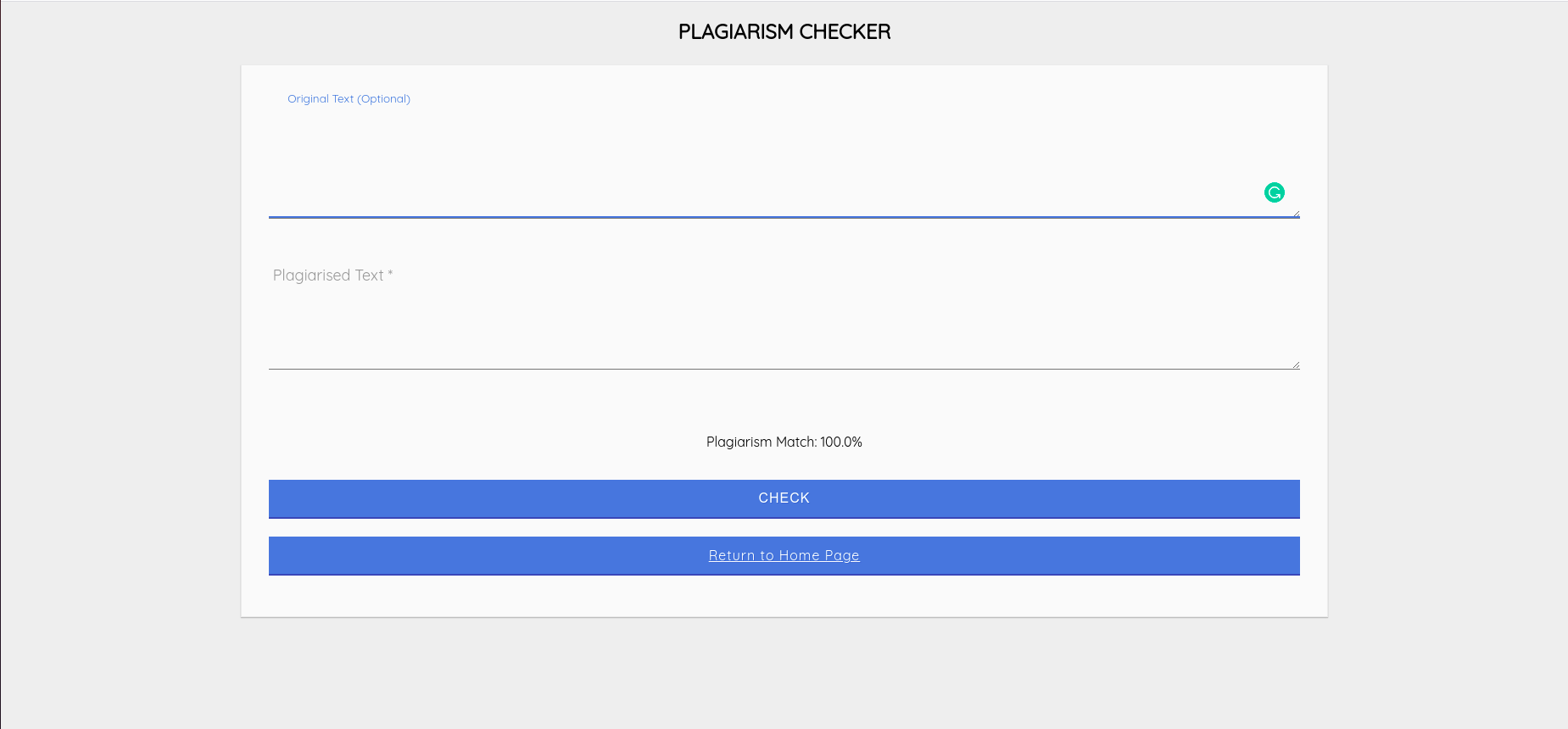
Developed a Plagiarism Detection Web App which is used to detect content that is taken over the web without the help of any Google APIs. Used Cosine Similarity Algorithm through which, I was able to achieve an accuracy of about 88%. Used Flask as our backend for linking the web pages and SQLite as our database for storing the user’s personal information
Technology Stack: Web Scraping, Flask, SQLite, HTML, CSS ,JavaScript

Priceopedia is a Web Application which is used to track price of different products. Used JavaScript libraries like Chart.js to show interactive graphs, which show price range between different time periods like 1 week, 3 weeks or 1 month. Used Django as our backend for user authentication and linking web pages and HTML, CSS and JS for designing web pages and PostgreSQL as our database for storing product related information
Technology Stack: Django, PostgrSQL, HTML, CSS, JavaScript, Chart.js
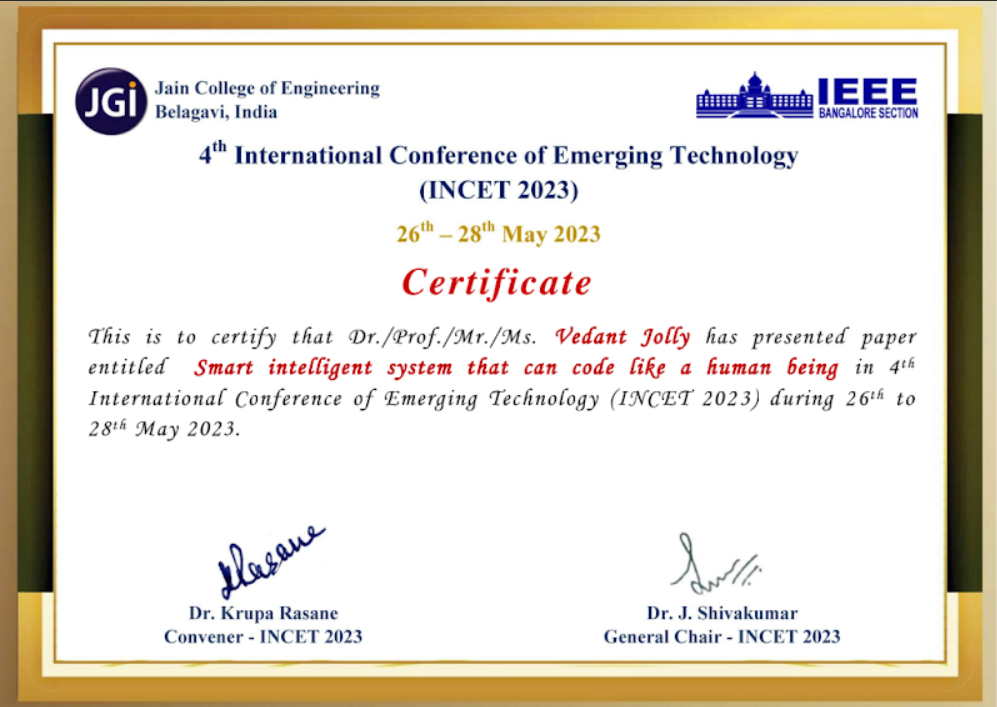
According to recent studies, a large number of data scientists spend most of their time on tasks like data cleaning and organizing data. They need to memorize big complex syntaxes for all the major tasks in the data science life cycle. Often these tasks are redundant. Therefore, we propose to build an intelligent system that enables data scientists to perform all the tedious and time-consuming tasks such as EDA, data cleansing, data preprocessing, data visualization, modeling, and data science lifecycle evaluation. Just state the logic of your query in natural language the system will automatically output all relevant Python code snippets. Existing applications involving the text-to-code generation and code search are limited and a lot of them do not work in non-ideal conditions. The reason behind it is the data set on which the existing models have been built. These datasets do not consider real-world factors such as slang, acronyms, and paraphrases. Therefore, a new dataset was created consisting of real-world user queries, representing the scenarios a user is most likely to face daily. We plan to build a logic-oriented system that only needs to convey the logic correctly in text in natural language. It saves a lot of time, allowing data scientists to spend most of their time building logic instead of focusing on code.
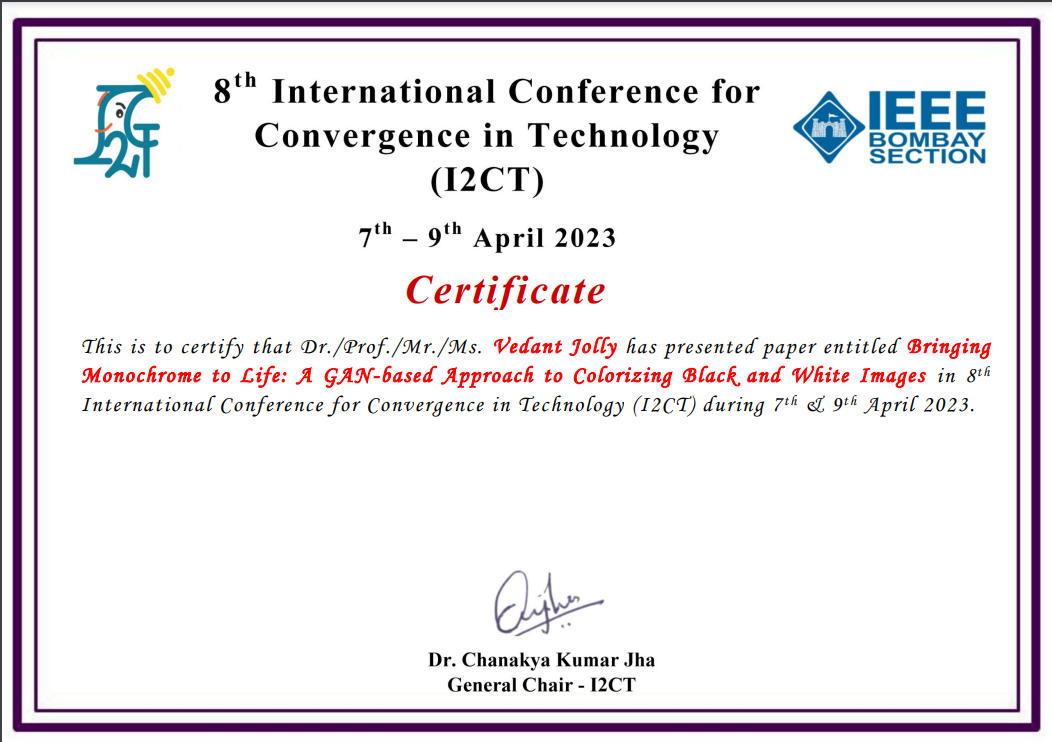
The automatic image colorization technique has garnered a lot of attention over the past ten years for a variety of applications, including the restoration of old or damaged photos. Due to the many degrees of freedom in the assignment of color information, this problem is very poorly presented. Recent advances in automatic colorization either use photographs with a recurring theme or need highly processed data, like semantic maps, as input. CNN is highly adept at classifying objects and can quickly identify skies, trees, and other vegetation, faces, and people. Even if flags and famous monuments are represented in the data sets, colorization fails to effectively depict them when applied to these items. In our method, we use a conditional Conditional Generative Adversarial Network (Conditional GAN) to try and fully generalize the colorization process. The network is trained using publicly accessible datasets like CIFAR-10.

The number of persons worldwide who are blind or partially impaired is close to 285 million. According to the most recent World Health Organization data, the doctor-to-patient ratio in India is approximately 0.74:1000. This enormous disparity results in treatment delays in the majority of instances. The sad thing is that disorders like diabetic retinopathy (DR) and glaucoma spread more rapidly and can result in total blindness as a result of the delayed treatment obtained. The sad part of the story is that these diseases can be cured in 75% of cases. The suggested machine learning model focuses on these elements and aids in the early diagnosis of eye disease based on the fundus scope image of the eye, which can aid in the patient’s survival. Based on the provided dataset, we used the MobiNet model to identify several eye illnesses. The experimental research verified that, when tested in various lighting circumstances, the suggested model produced improved accuracy in detecting eye illnesses. By enhancing the disease identification process, the algorithm has the potential to lessen the strain on the already overburdened healthcare system.
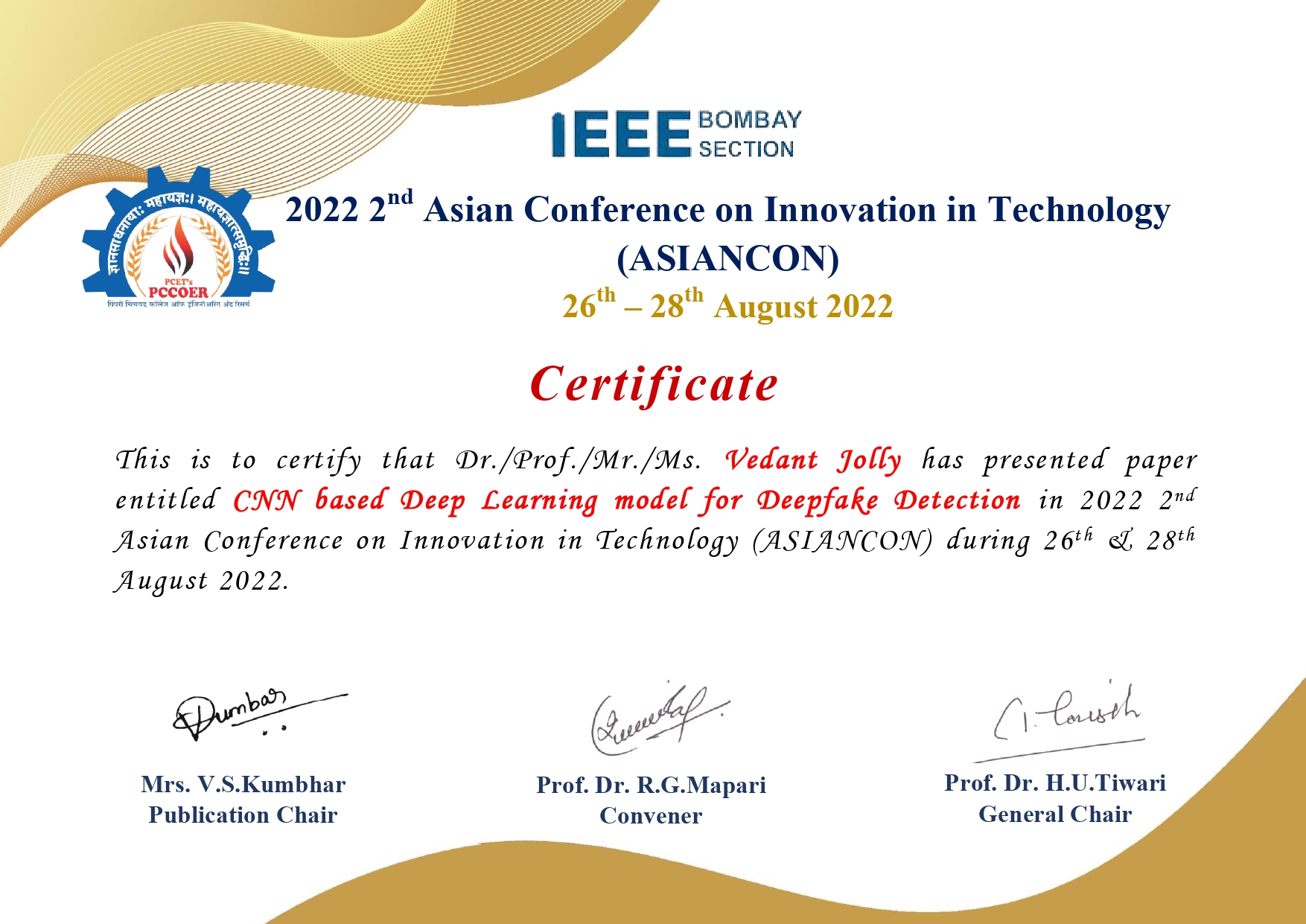
In the recent period there has been massive progress in synthetic image generation and manipulation which significantly raises concerns for its ill applications towards society. This would result in spreading false information, leading to loss of trust in digital content. This paper introduces an automated and effective approach to get facial expressions in videos, and especially focused on the latest method used to produce hyper realistic fake videos: Deepfake. Using faceforenc++ dataset for training our model, we achieved more that 99% successful detection rate in Deepfake, Face2Face, faceSwap and neural texture. Regular image forensics techniques are usually not very useful, because of the strong deterioration of data due to the compression. Thus, this paper follows a layered approach with first detecting the subject with the help of existing facial recognition networks followed by extracting facial features using CNN, then passing through the LSTM layer, where we make use of our temporal sequence for face manipulation between frames. Finally use of the Recycle-GAN which internally makes use of generative adversarial networks to merge spatial and temporal data.
Posture detection is quite challenging as it involves a lot of intricacies for correctly identifying the key points involved. In this paper, we analyzed existing Posture detection models and figured out the shortcomings associated with them. Half of them involve hardware, making them immovable and inconvenient for the user. The other half engages with a recognition system based on sensors that involve high costs and complex implementation processes. Scrutinizing them one after another, we developed a comprehensive hybrid model that converts a 2-dimensional scene into a 3-dimensional one, making it easier & quicker for someone sitting in front of a screen to correct their posture. This model can capture the temporal evolution of information offering insights into the user's posture at different times. It helps in achieving better results than the existing models.

Stock market prediction is quite challenging as the market is volatile and its direction is stochastic. The stock market gets driven by several factors like investor sentiment, economic strength, market rumors, inflation. All these aspects together make the stock market quite turbulent and hence very difficult to predict with accuracy. In this paper, we analyzed traditional Machine Learning prediction models and figured out the drawbacks associated with them. Hence we scrutinized a range of stock prediction models and finally singled out the Bi-directional Long Short-Term Memory (Bi-LSTM) neural network. It intends to find out the title role of time series by analyzing historical data of different stocks and predict stock price trends. They form a unified framework for depth and time calculation learning faster than the one-directional approach. It can capture the temporal evolution of information which allows this model to attain the best performance.
Technology Stack: Tensorflow, Sklearn, Numpy, Pandas